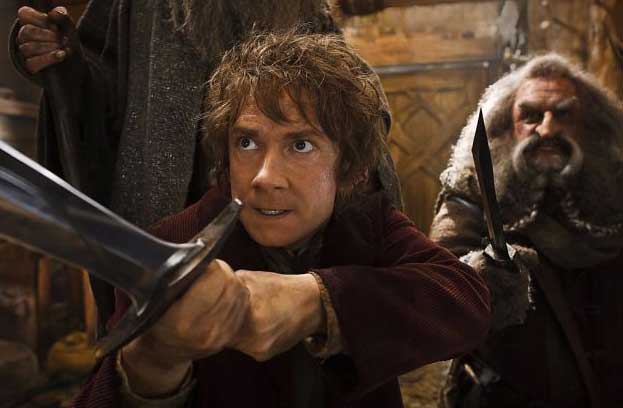
After long wait, The Hobbit: The Desolation of Smaug, the second part of Peter Jackson’s trilogy is finally in theaters. And, for the most part, the mega-budget sequel lived up to the hype.
First, the positives: It would be very easy for a director of less talent to fail at making his or her actors achieve serious performances when adapting Tolkien. Peter Jackson, on the other hand, seemed to coax stellar performances all around from his large ensemble of actors. Particularly noteworthy was Sir Ian McKellen, who portrayed Gandalf with gravitas and authority while still making some of his shortcomings believable and relatable to an audience who grew accustomed to his character’s power in the first threeThe Lord of the Rings films.
Orlando Bloom’s return to Middle Earth was also done in an effective and enjoyable way. Since the film serves as a prequel to previous The Lord of the Rings movies, the veteran actor needed–and was able to–portray a much less mature version of his character, Legolas. Martin Freeman was able to expertly walk the line in his role as Bilbo, a complicated character always in flux, striving to do the right thing yet slowly succumbing to the corrupt power of the ring.
While the performances were great, there are some issues I take umbrage with. The first three Rings films captured audiences with phenomenal prosthetics and practical special effects, bringing to life the vast armies of Middle Earth, etc, so it was disappointing to see a reliance on computer generated imagery for the orcs in this film. CGI can be effectively used in many ways, and Peter Jackson is a pioneer in this arena, but the rendering of his orcs in this film pales in comparison to the quality of the CGI used for the dragon Smaug (voiced by Benedict Cumberbatch). The overly smooth, computerized skin takes the audience out of the movie, and makes it hard to get back into the mythical world.
Additionally, some of the action scenes seemed to have been directed with a future franchise of theme-park rides in mind, more reminiscent of the infamous fourth Indiana Jones movie than the flawlessly crafted scenes from Lord of the Rings: The Two Towers.
All in all, the film is definitely worth seeing. As always, Peter Jackson has made the film accessible for those who have not read the books in deference to the films, while still leaving plenty of Easter eggs for fans of Tolkien’s original writings. At nearly 3 hours, the film can feel slow at times, but the action sequences and continuation of the story pull viewers through to the end. I would give it 4 out of 5 stars.
Become a Saturday Evening Post member and enjoy unlimited access. Subscribe now



